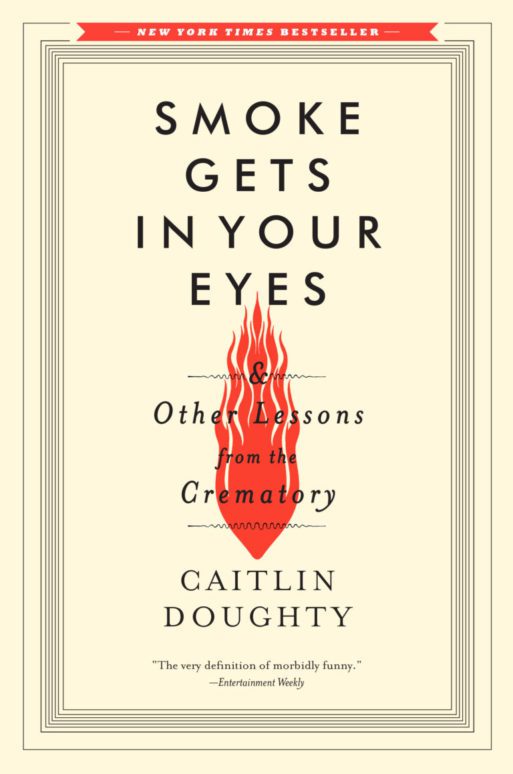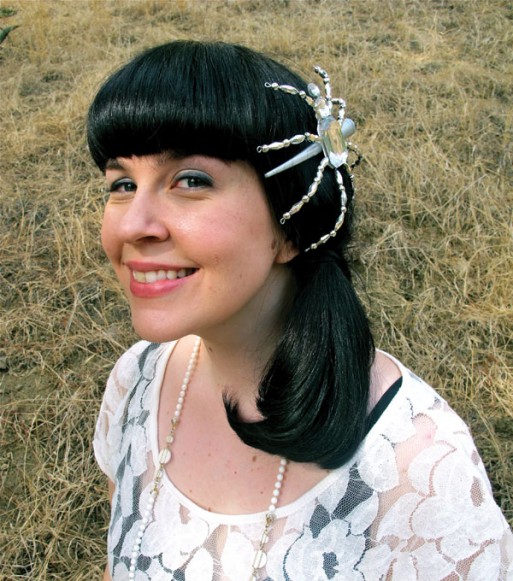 From her opening line “A girl always remembers the first corpse she shaves,” I could tell this isn’t your run-of-the-mill memoir.
From her opening line “A girl always remembers the first corpse she shaves,” I could tell this isn’t your run-of-the-mill memoir.
Caitlin Doughty’s Smoke Gets In Your Eyes & Other Lessons from the Crematory is at once laugh-out-loud funny and achingly tender. It follows our narrator through her experiences from doing the grunt work at a crematory to earning her funeral director license. It’s not exactly a glamorous Hollywood rags to riches tale, but Doughty doesn’t seem to mind.
What makes Doughty’s book so engaging is not only her personal brand of sardonic humor but her deep connection with the subjects she discusses.
What makes Doughty’s book so engaging is not only her personal brand of sardonic humor but her deep connection with the subjects she discusses. She takes readers through what she sees, feels and thinks when she watches someone being embalmed. Even if you have never laid eyes on a dead body, you’ll come away from this book feeling one step closer.
As a 23-year-old with an intense curiosity for death rituals myself, it was easy to relate to Doughty. When she wrote about being terrified of death for years before having an epiphany, I couldn’t help but think, “Me too.” Her fear began when she witnessed a sudden death as a child, and it grew until she finally decided to face her fear. It’s something anyone can relate to, even if you aren’t a twentysomething with a morbid sense of humor.
Doughty describes her first experiences in end-of-life work the way someone might describe a floundering first kiss. Her stories are hilarious and oddly sweet, like memories from awkward teenage years.
Doughty describes her first experiences in end-of-life work the way someone might describe a floundering first kiss. Her stories are hilarious and oddly sweet, like memories from awkward teenage years. Whether it’s her first corpse shave, a fumbled gurney pickup or a disastrously tense visit to a hospital’s morgue, Doughty knows how to hook in readers.
She says the United States has taken the culture out of death, choosing instead to erase it from our sight.
The book isn’t all laughs. Doughty has a bone to pick (no pun intended) with our modern concept of death and dying. Doughty describes the funeral practices of dozens of cultures with the care and sensitivity of the best anthropologists. She says the United States has taken the culture out of death, choosing instead to erase it from our sight.
Unlike cultures that have rich spiritual rites surrounding death, Doughty makes the salient point that we’re lucky in this country to have the same dying arrangements as our parents, let alone generations of traditional funeral rituals. We are so terrified of death in this country that many of us will go our entire lifetimes without seeing a dead body in its natural state. She wants to start a revolution to change this.
Smoke Gets In Your Eyes takes this idea to heart. Doughty describes the postmortem preparation process in all of its gory details. Be forewarned, this book will put the squeamish on edge.
If, like me, you pore over every gruesome detail out of a sense of curiosity, this book is perfect for you. If you pale at even the thought of blood, this book is required reading.
Why? Because although they are extremely detailed, Doughty’s descriptions don’t repel readers. She talks about death and the decomposition process in a frank, honest tone that is unexpectedly comforting. By the end of the book, you will likely be desensitized to most future tales of blood and gore. She does not exploit the cremation process, but takes readers through exactly what happens. It lifts the shroud from the technique, eliminating the fear and mystery behind it.
The fact that we must give warnings to readers about the graphic nature of a book that speaks frankly about death in itself proves Doughty’s point. She challenges those among us who are afraid to confront these details. She wants to remove death’s stigma and recognize it as a natural part of life. As she says, the driving force behind everything we do is guided by the knowledge that we will die, even if we refuse to think about it.
If you want to know more about Doughty’s work, take a look at her question and answer series Ask A Mortician. For more information about her natural death movement, visit her The Order of the Good Death blog.

 Smoke Gets In Your Eyes & Other Lessons from the Crematory by Caitlin Doughty
Smoke Gets In Your Eyes & Other Lessons from the Crematory by Caitlin Doughty



 Debating Medical Aid in Dying
Debating Medical Aid in Dying
 “Help Me, Helen”
“Help Me, Helen”















